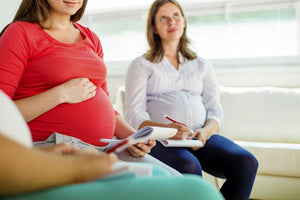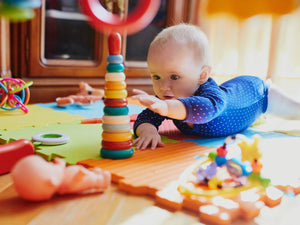Tackling eczema can often be a frustrating and upsetting thing for both parent and child, particularly when you don’t know the exact source and don’t have that magic wand you desperately want to ‘disappear’ their discomfort.
But although the root cause of eczema is currently unknown, according the Eczema Association of Australasia (EAA), there does seem to be a number of common allergens, which can be attributed to triggering “flare ups” which can be relatively simple to combat.
What Causes Eczema?
Even though triggers can be vastly different between individuals, it is generally recommended to avoid contact with soap, artificial fragrance, high foaming agents and some preservatives, which are commonly found in some skin, care products that can be highly irritating to eczema skin.
When it comes to food, avoiding flavour enhancers, unnecessary additives and preservatives may be beneficial and things in your everyday environment like dust mites, pollens, flowers and cigarette smoke, may assist in minimising exposure to triggers and the resulting ‘flare ups’.
Through trial and error, you can discover your child’s particular triggers and avoid these things as much as possible and/or make another choice.
For example – if eating regular bread seems to trigger a flare-up - try gluten-free or go with rice based products instead. If soap is an irritant make the switch to soap-free toiletries and household products. These are more widely available in supermarkets these days so it just takes a minor change in your shopping habits.
What are the Symptoms of Eczema?
Eczema skin is essentially dry skin that has lost some of its barrier function. Therefore it can’t adequately retain moisture and block irritants and allergens such as dust, grass and wool fibres on its own. This results in the ‘eczema patches’ that can be red, crusty, scaly, flaky, very itchy and even weepy! The urge to scratch can be unbearable!
Managing Eczema
Thankfully, moisturisers can help to maintain the integrity of the skin barrier and, if used regularly - especially at the first signs of dry skin – may help the appearance and feel of skin affected by eczema.
According to the EAA, for mild eczema, and many cases of moderate eczema, adequate moisturisers combined with a good, general skin care routine can be used to successfully manage the condition.
Even when a prescription medicine may be required to treat the affected area, moisturisers are often recommended to be used regularly and as early as possible, to obtain maximum benefit.
Always seek medical advice from your doctor or health professional for your particular child’s condition, but a general skincare routine you may find helpful:
Before You Start:
If possible, test any or all products on a small area of skin first for a few days/weeks to ensure that they do not sting, burn or irritate. (Some understanding brands/companies can provide you with free single use samples for this purpose). If the product causes an immediate reaction – discontinue use immediately and seek medical advice.
Step 1: Gentle Cleansing
Pick a cleanser that won’t further dry or irritate the skin. Soap, harsh detergents and some cleansers can strip skin’s natural protective skin oils, temporarily raise pH levels, and be quite irritating and drying – even more so on sensitive skin. Therefore, it is recommended not to use soap or solid cleansing bars, artificial fragrances or cleansers with harsh detergents when washing skin affected by eczema, but to choose a pH balanced, soap and sulphate free product, preferably with added moisturising ingredients.
Keep water on the cooler side to prevent further irritation via hot steamy water.
Step 2: Moisturise, Moisturise, Moisturise
Moisturiser should be used liberally and frequently several times a day – even up to every hour or so if skin is very dry - or at least AM and PM. Apply gently, without rubbing, within a few minutes of bathing (while the skin is still a bit damp) to ‘lock in’ the moisture. Continue to use moisturiser daily, even when the eczema patches have improved or gone away. This may help prevent frequent or severe flare-ups.
Step 3: Protection
Choose a thick cream or lotion to offer protection to the skin, particularly on the eczema patches - preferably one containing ingredients which may help soothe the skin – and pat gently where needed. (No rubbing though! As the friction will further irritate.)
Repeat daily and you are on your way to better skin!
About the Author:
Australia’s own Michelle Vogrinec, mum of three, Creator and MD of GAIA Skin Naturals is often asked about eczema due to her personal search for skincare for her firstborn son’s sensitive skin. He developed eczema at just 8 weeks of age, which eventually led Michelle to create her own natural and organic baby skincare range - GAIA Natural Baby - back in 2002.
Our Products
-

01. Guide to a Healthy Pregnancy
$55 -

02. Positive Birthing Course
$55 -

03. Infant Feeding Guide
$55 -

04. Baby Sleep Guide - First 12 Months
$55 -

05. Toddler Parenting Course 1 - 3 Years
$55
-
 When to Start Antenatal Classes?
When to Start Antenatal Classes?
Becoming a parent is an incredible milestone, but it comes with a host of changes that can be daunting, especially for first time parents. Antenatal classes are all about offering expectant parents the education they need to make informed decisions, look after their bodies and care for their newborn babies. While you probably already have a long list of things you need to accomplish during your pregnancy, it’s a good idea to make time to attend antenatal classes.
-
 Development Milestones 4-8 Months
Development Milestones 4-8 Months
As they reach the middle of their first year, you'll start to see bigger leaps in their growth and ability!
In this article, we’re going to discuss your baby’s developmental milestones between 4-8 months, and what you can expect along the way.





 When to Start Antenatal Classes?
When to Start Antenatal Classes?
 Development Milestones 4-8 Months
Development Milestones 4-8 Months








